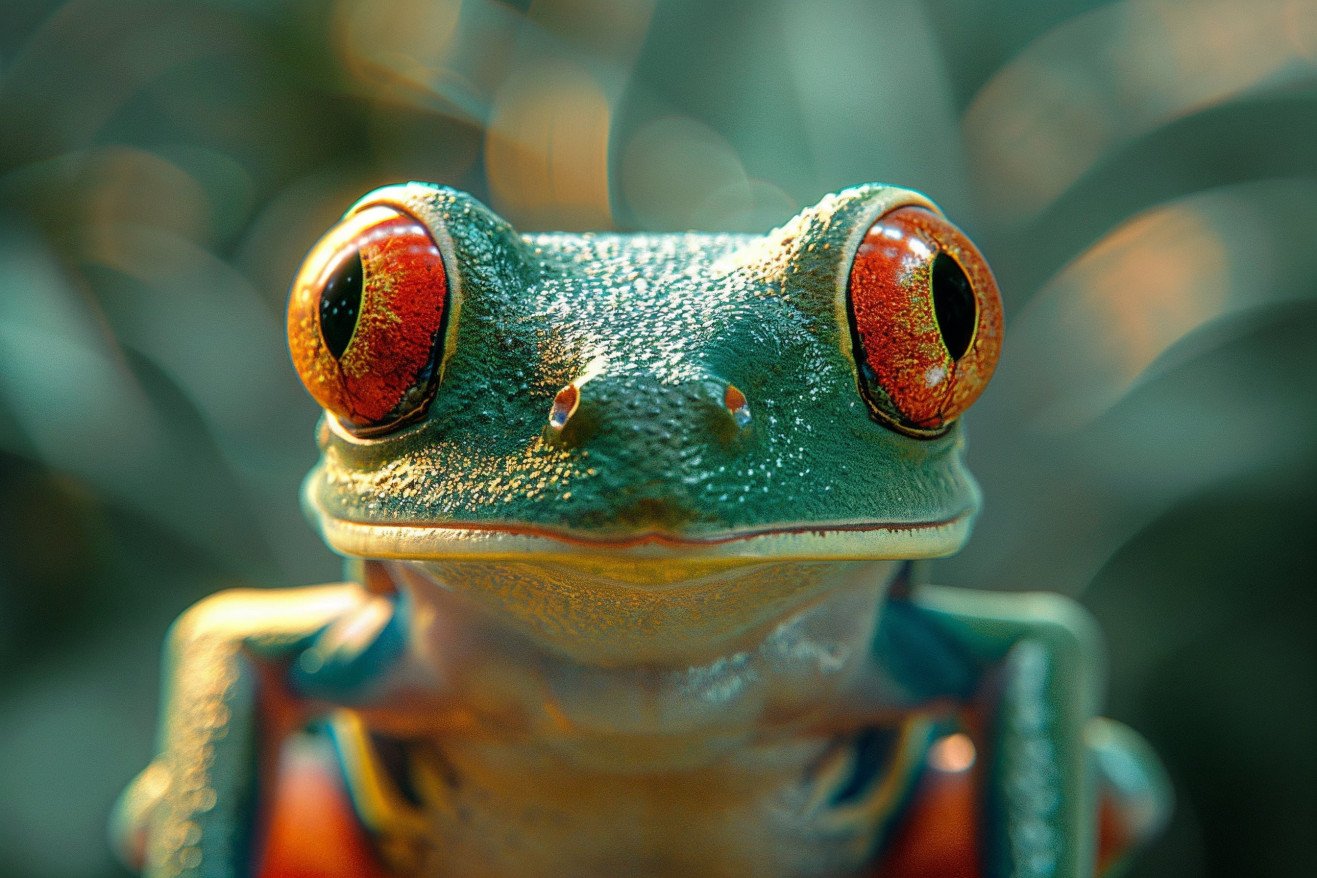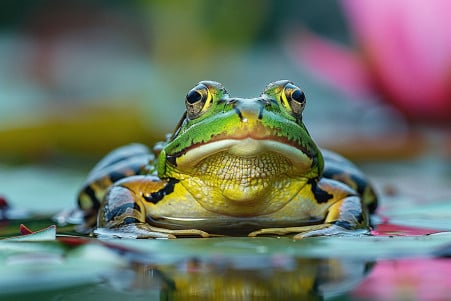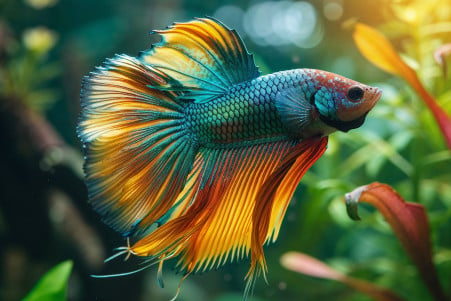Do Frogs Have Emotions? The Science of Frog Happiness
22 April 2024 • Updated 22 April 2024

Believe it or not, frogs may be capable of experiencing joy and happiness. Yes, frogs are happy! While frogs have much smaller and less complex brains than humans, their happiness is indicated by their overall health, well-being, and living conditions, as well as their social interactions with other frogs.
In this article, we'll take a deep dive into the world of frog psychology, neuroscience, and ethology to learn about the evidence that shows that these cold-blooded vertebrates may have positive emotional experiences similar to human happiness. By looking at the biological, environmental, and behavioral aspects of frog happiness, you'll come away with a deeper understanding of how emotions are shared throughout the animal kingdom.
Can frogs feel happy?
How Frogs Show Happiness
Frogs are known to be happy when their basic needs are met, and they often show this happiness through energetic, playful behavior. According to Random Galaxy's study, this can include lots of hopping and moving around, which is a sign of happiness. In addition, frogs have been shown to have the neurotransmitters dopamine and serotonin, which are associated with positive emotions in humans, suggesting that frogs can experience pleasure.
In the wild, frogs that are more confident and less stressed are more likely to exhibit signs of happiness. As ToadsnFrogs.com points out, these frogs are more likely to be relaxed and carefree and show interest in their environment, which is a sign of positive emotions. This is especially true for larger frogs, which are more likely to be bold and happy because they have fewer predators to worry about.
In the end, when a frog's basic needs for food, shelter, and clean water are met, they are more likely to show signs of happiness and well-being. Oxford Academic's study emphasizes the importance of studying animal emotions in the wild, where emotions have evolved to serve specific functions. By studying frogs in the wild, where their basic needs are met, we can learn more about how happiness is expressed in these animals.
Ethics of Frog Sentience
The evidence that frogs are sentient and can experience happiness has important ethical implications. According to World Animal Protection, frogs exhibit behaviors such as learning, memory, communication, and even play, which indicates that they have a rich emotional life. This means that we need to rethink how we treat frogs, especially in the context of the exotic pet trade.
As the JZBG study notes, many captive amphibians have poor welfare, with high mortality and long-term welfare issues. It is important to provide better housing, enrichment, and veterinary care that meets the emotional needs of frogs. In addition, the Frog in the Well review suggests that recognizing frog sentience could help with conservation efforts, as their welfare should be considered in addition to their physical health.
In the end, recognizing frogs as sentient animals means that we need to prioritize their emotional welfare, not just their physical welfare, in captivity, research, and conservation. This change in perspective could revolutionize how we care for and conserve these amazing animals.
How to Make a Happy Frog Home
A healthy, enriching environment is essential for the emotional health of pet frogs and their overall happiness. According to Skye Hooks' article, the first step to creating the right environment is to make sure the enclosure is the right size, like a 10-gallon tank for most species, and offers plenty of room for the frogs to move around and explore. Adding live plants, branches, and other naturalistic elements will make the tank more visually appealing and also help ensure that the frogs' natural instincts are met.
It's just as important to make sure that the temperature and humidity are right, as PetMD points out. Since frogs are ectothermic, they can't control their body temperature internally, and making sure that the temperature and humidity are consistent and comfortable, as well as misting the tank regularly, will help keep the frogs' stress levels low and their happiness levels high. In addition, frogs should be given places to hide, whether it's a hide box that's bought from a pet store or a custom-made hide.
Finally, as Frog Care 101 on Medium points out, it's important to avoid handling the frogs too much and to make sure that their social structures in the wild are mimicked in captivity. If frog owners can make sure that their frogs' habitats meet their emotional needs, they can be sure that their pets are happy and living their best lives.
Frog Emotions and Human Emotions
When it comes to frog and human emotions, there are some similarities and some differences. According to the emotion and phylogeny study, the evolution of emotion probably happened between amphibians and reptiles because emotional tachycardia and fever are present in reptiles and mammals but not in frogs or fish.
On the other hand, while frogs have a more reflexive visual system for instinctive responses to threats, humans have some of the same innate fear responses. However, as the Texas Tech University study shows, humans also experience chronic stress and anxiety in ways that are more unique to humans and other animals in captivity. This means that understanding the fear and stress systems in frogs could help humans in some ways, but not in others.
In the end, while the emotional lives of frogs and humans are very different in their complexity, they are linked by the evolution of emotion. This link can help us better understand how emotions work across the animal kingdom.
Cultural Perspectives on Frog Emotions
Human perceptions and attitudes toward frogs have changed from seeing them as divine punishment, to scientific specimens, to environmental victims. As reported by The Conversation, frogs' negative image in Western culture can be traced back to biblical and classical sources, with biblical references depicting them as a swarming plague. Even early naturalists such as Carl Linnaeus described frogs in the most negative terms, referring to them as "foul and loathsome animals."
Frogs have also been negatively impacted by their use in scientific research, where their bodies and nervous systems have been objectified and exploited in laboratories rather than being seen as sentient, feeling creatures. As the University of Bristol research demonstrates, this has helped to create a cultural context that has often overlooked frogs' emotional lives.
On the other hand, positive childhood experiences with frogs can lead to more empathetic attitudes toward them as emotional beings. The study on cultural norms in Cape Town found that respondents who had caught tadpoles or played with frogs as children were more likely to have positive attitudes toward frogs as adults. This suggests that both cultural/historical and personal/experiential factors have played a role in shaping human attitudes toward frog emotions over time.
Conclusion: Let's Celebrate Frog Happiness
The evidence is clear that frogs can feel a variety of emotions, including happiness. Not only have studies shown that frogs have physical reactions to positive stimuli, including increased heart rates and activity levels, but they have also shown that frogs respond to positive situations with behaviors that are consistent with happiness, such as jumping and exploring.
Acknowledging that frogs are emotional, feeling animals is important for ensuring that their needs are met, especially in situations like the pet trade, where frogs are often kept in captivity. It's important that people who keep frogs as pets make sure that their emotional needs are met, which includes making sure that they are in environments that are stimulating and that reduce stress. This understanding could also be important for conservation and even human psychology.
In the end, the research shows that emotions are a universal part of the animal kingdom. As we learn more about the emotional lives of frogs and other animals, we will learn more about the emotions that we share with other living beings, including happiness, fear, and other feelings.


